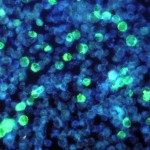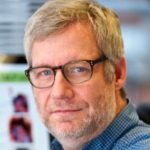Link to Pubmed [PMID] – 20135684
Stem Cells 2010 Apr;28(4):753-64
The differentiation of multipotent cells into undesirable lineages is a significant risk factor when performing cell therapy. In muscular diseases, myofiber loss can be associated with progressive fat accumulation that is one of the primary factors leading to decline of muscular strength. Therefore, to avoid any contribution of injected multipotent cells to fat deposition, we have searched for a highly myogenic but nonadipogenic muscle-derived cell population. We show that the myogenic marker CD56, which is the gold standard for myoblast-based therapy, was unable to separate muscle cells into myogenic and adipogenic fractions. Conversely, using the stem cell marker CD34, we were able to sort two distinct populations, CD34(+) and CD34(-), which have been thoroughly characterized in vitro and in vivo using an immunodeficient Rag2(-/-)gamma(c) (-/-) mouse model of muscle regeneration with or without adipose deposition. Our results demonstrate that both populations have equivalent capacities for in vitro amplification. The CD34(+) cells and CD34(-) cells exhibit equivalent myogenic potential, but only the CD34(-) population fails to differentiate into adipocytes in vitro and in vivo after transplantation into regenerative fat muscle. These data indicate that the muscle-derived cells constitute a heterogeneous population of cells with various differentiation potentials. The simple CD34 sorting allows isolation of myogenic cells with no adipogenic potential and therefore could be of high interest for cell therapy when fat is accumulated in diseased muscle.

